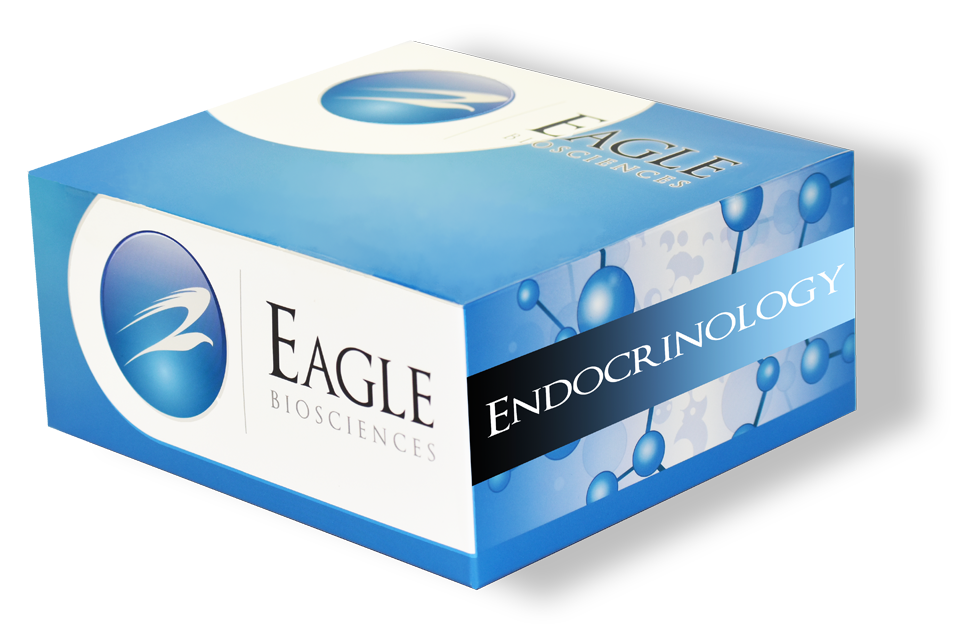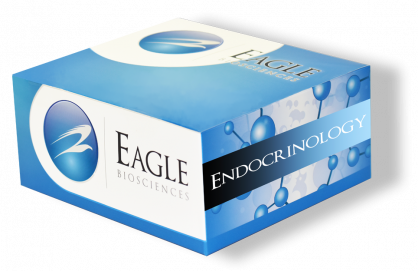Rodent Urocortin 1 ELISA Assay
The Rodent Urocortin 1 ELISA Assay is For Research Use Only
Size: 1×96 wells
Dynamic Range: 1.53 – 100 ng/mL
Incubation Time: 21 hours
Sample Type: Mouse/Rat Serum, Plasma
Sample Size: 10 µL
Alternative Names: Rodent UCN1, Mouse/Rat Urocortin 1
Assay Background
Urocortin (Urocortin1: Ucn1) is first identified in rat, and later in human and mouse3. It is the second mammalian member of the CRF family. Rat and mouse Ucn1 have the same amino acid sequence and display 95% structure homology to human Ucn1, 45% to CRF and 63% to urotensin.
In the rat, Ucn1 immunoreactivity (IR) was shown to distribute widely in central nervous system, endocrine organs, and digestive system and its concentration was highest in pituitary (11 pmol/g, w.w.). Koziez, Yanaihara et al. used a polyclonal antibody against rat Ucn1 to define the distribution of Ucn1-IR in rat central nervous system and found a large number of neurons with Ucn1-IR in rat brain.
Synthetic human Ucn1 binds with high affinity to CRF receptor type 1(CRFR1), 2 alpha(CRFR2α) and 2 beta (CRFR2β). CRFR1 and CRFR2 have been shown to link to the development of stress-related disorders, such as mood and eating disorders. CRFR1 is expressed predominantly in the brain and pituitary, whereas CRFR2 expression is limited to particular brain areas and to some peripheral organs. Data were also presented supporting the hypothesis that this peptide is the endogenous ligand for the CRFR2.
Synthetic human Ucn1 stimulates cAMP accumulation in cells stably transfected with those receptors and acts in vitro to release ACTH from dispersed rat anterior pituitary cells. In addition, the CRF-binding protein binds human Ucn1 with high affinity and can prevent Ucn1-stimulated ACTH secretion in vitro. Ucn1 was suggested to play important roles in various tissues in normal rats, but shown not to behave as a hypothalamic hypophysiotropic factor in mediating adrenocorticotropin secretin in adrenalectomized rats. Ucn1 has been implicated in various endocrine responses, such as blood pressure regulation, as well as in higher cognitive functions.
Synthetic human Ucn1 also stimulates plasma ACTH, cortisol and atrial natriuretic peptide (ANP) secretin and suppresses plasma ghrelin in healthy male volunteers. In the human, plasma Ucn1 is elevated in heart failure, especially in its early stages. This fact may useful in the diagnosis of early heart failure.
We have already developed mouse urocortin 2 (Ucn2) EIA kit (YK190), rat urocortin 2 (Ucn2) EIA kit (YK191) and mouse/rat urocortin 3 (Ucn3) EIA kit (YK200). This time, as a part of tools for urocortin research, our laboratory developed mouse/rat Ucn1 EIA kit (YK210), which is highly specific for mouse/rat Ucn1 with almost no crossreaction with Ucn2 (mouse), Ucn2 (rat), Ucn3 (mouse, rat), ACTH (mouse, rat), ACTH (human) and CRF (mouse, rat, human). The kit can be used for measurement of Ucn1 in mouse/rat plasma or serum with high sensitivity. It will be a specifically useful tool for Ucn1 research.
Related Products
Rodent Urocortin 3 ELISA Assay
Rat Urocortin 2 ELISA Assay
Mouse Urocortin 2 ELISA Assay



